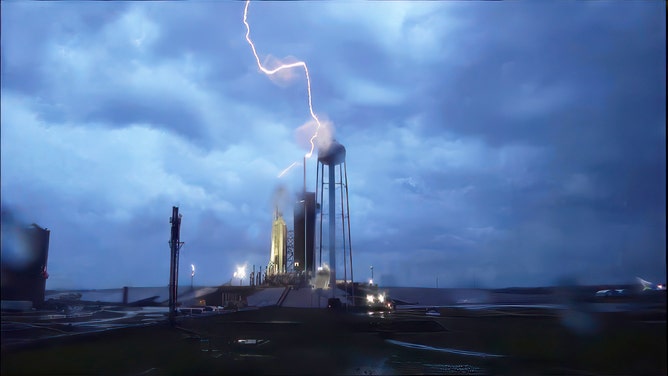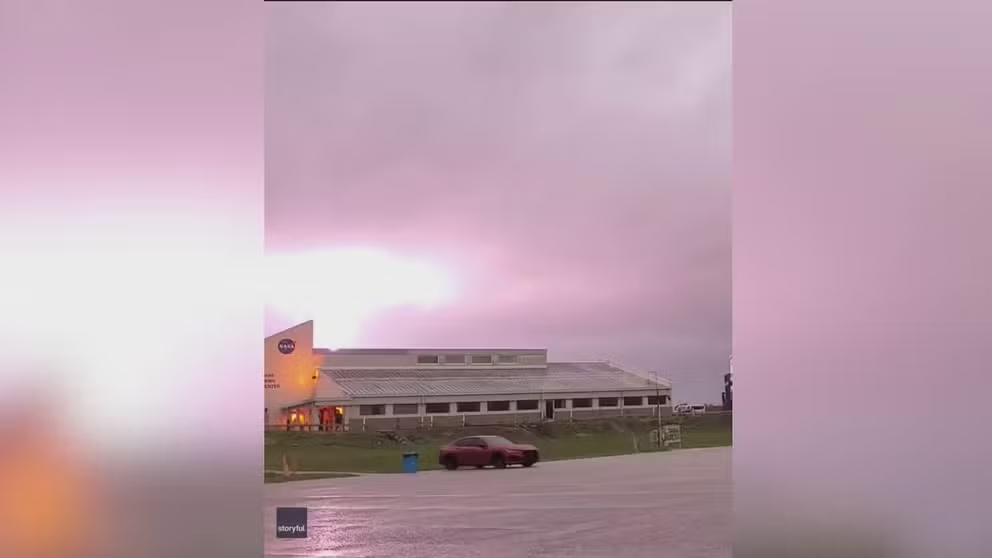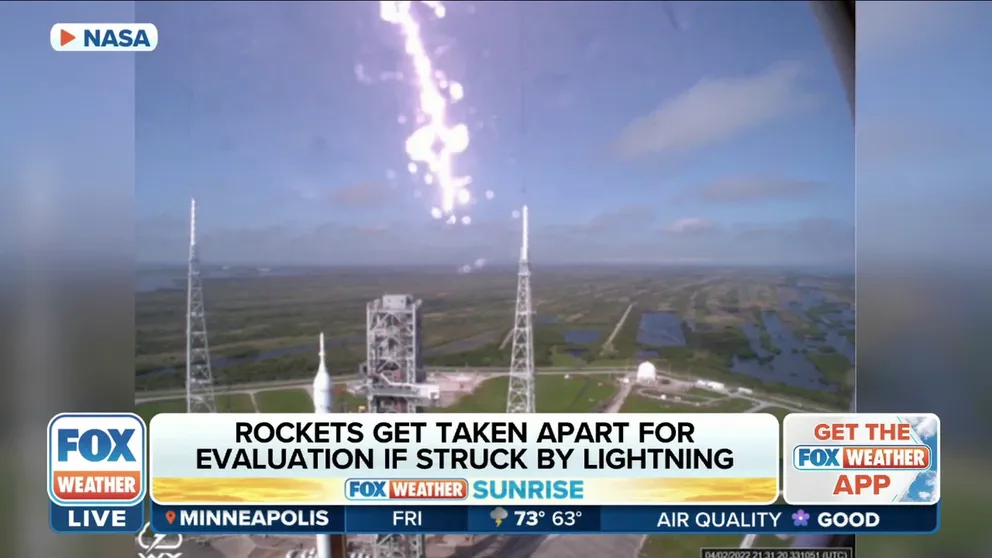Watch: Lightning strikes near Cape Canaveral launch pads as SpaceX rocket awaits liftoff
Video recorded Thursday evening captured a lightning bolt strike near the launch pad where SpaceX's ViaSat-3 heavy lift rocket sat after its launch was scrubbed earlier in the day. The bolt was one of over 10,000 lightning strikes detected in the area that afternoon and evening.
SpaceX forced to delay launch of Falcon Heavy rocket as lightning strikes seen near launch pad
SpaceX was forced to delay the launch of its Falcon Heavy rocket, as severe storms battered the east coast of Florida on Thursday, April 27. Video shows a lightning strike near the launchpad of the heavy-lift rocket.
CAPE CANAVERAL, Fla. – Severe thunderstorms forced the scrub of a planned launch at Florida's Kennedy Space Center, and video from the storms shows it was a wise decision.
Livestreamer LabPadre captured a lightning bolt strike Thursday just after 7:50 p.m. EDT near the launch pad where SpaceX's ViaSat-3 heavy lift rocket sat after its launch was scrubbed earlier in the day.

A lightning bolt strikes at the SpaceX launch pad 39A at Cape Canaveral, Florida on April 28, 2023.
(SpaceX / FOX Weather)
It was one of thousands of lightning strikes to hit the area Thursday. Lightning detection equipment from Vaisala XWeather showed just over 10,000 lightning strikes within 12 miles of Cape Canaveral just between noon and 8 p.m. EDT, of which 2,092 bolts hit the ground, according to Scott Mackaro, Head of Innovation at Vaisala XWeather. Other lightning may have been within the cloud or between clouds.
Zooming in closer: Between about 7:30 p.m and 8:30 p.m EDT, there were 484 lightning strikes inside a radius of about 6 miles from the launch pad, Mackaro said. Of those 484 lightning bolts, 101 hit the ground, Mackaro said.
Lightning strike seen over NASA building as storms sweep across eastern Florida
Several lightning strikes were seen illuminating a dark cloudy sky behind a building at NASA’s Kennedy Space Center, as severe storms moved across eastern Florida on Thursday, April 27.
Doppler radar even indicated rotation as storms moved through the area, prompting a Tornado Warning, and NASA encouraged visitors and employees to seek shelter until the storm passed.
SpaceX says they conducted additional checks of their rocket and ground support systems after the thunderstorms passed and all looks good. There were no reports of damage or injuries in the area, though severe storms did cause damage over on the Florida Panhandle earlier in the day.
SpaceX has now targeted Friday evening around 7:30 p.m. EDT for their next launch attempt, though thunderstorms remain in the forecast and the company estimates only a 30% chance of favorable weather.
Lightning towers protect rockets on launch pads
Each of the launch pads at Kennedy Space Center have some sort of lightning protection equipment in place. At nearby United Launch Alliance's launch pad, four metal towers surround the launch tower, each with a white fiberglass insulator that ULA rocket scientist Jim Kennedy calls "candlesticks."
A grid of wires goes directly above the rocket, and the web connects down to points on the ground. If lightning were to strike any of the points, the system creates the shortest path to the ground, diverting energy away from the rocket and nearby fueling tanks.
How ULA protects its rockets from lightning in Florida
Lightning is such a concern for scientists and engineers who work on Florida's Space Coast that they decided to invent a tool to protect themselves and their rockets from potential strikes. FOX Weather's Brandy Campbell got a look at ULA's Lightning Protection System.
PROTECTING PAYLOADS AND PEOPLE: HOW ULA LAUNCHES ROCKETS IN THE LIGHTNING CAPITAL OF THE US
"Every pad has its own system. They're all doing the same thing," Kennedy told FOX Weather during an interview last August. "It's all the same calculations on how to protect it. It's just how is that pad is set up; what is the best way for it?"
Recently, the lightning protection system at Kennedy Space Center launchpad 39B, where NASA's Space Launch System rocket was standing tall, helped the mega moon rocket survive the strongest lightning strike ever recorded at KSC.


